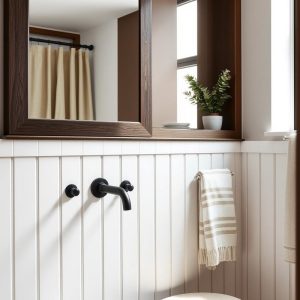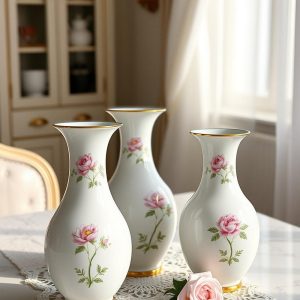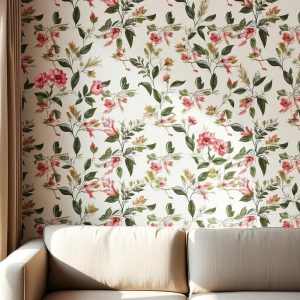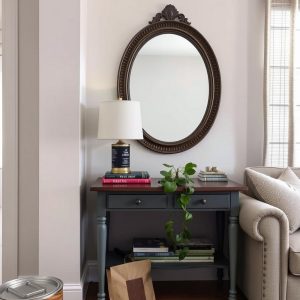Espresso-brown is the living room upgrade that never goes out of style, whether you want to add more color or make a cool space feel warmer. It has a moody look without being too dark, an earthy look without being too rustic, and it looks expensive even on a tight budget. The key is to use texture, contrast, and flashes of light with this dark color to make the room feel warm and welcoming instead of heavy. Here are fifteen hands-on ideas that use espresso finishes, paints, and accents in smart, useful ways. They range from quick weekend updates to rewarding build projects. You can make simple changes to stains, wraps that are good for renters, and painting methods that add character right away. Each idea has ways to keep the palette balanced with creams, natural fibers, brass, warm bulbs, and plants. Combine a few or stack a few: Espresso brown looks great with linen, leather, rattan, and stone, and it looks good with both modern and traditional furniture. Let’s get those brushes and hands to work.
1. Paint an Espresso Feature Wall for Depth Without Darkness
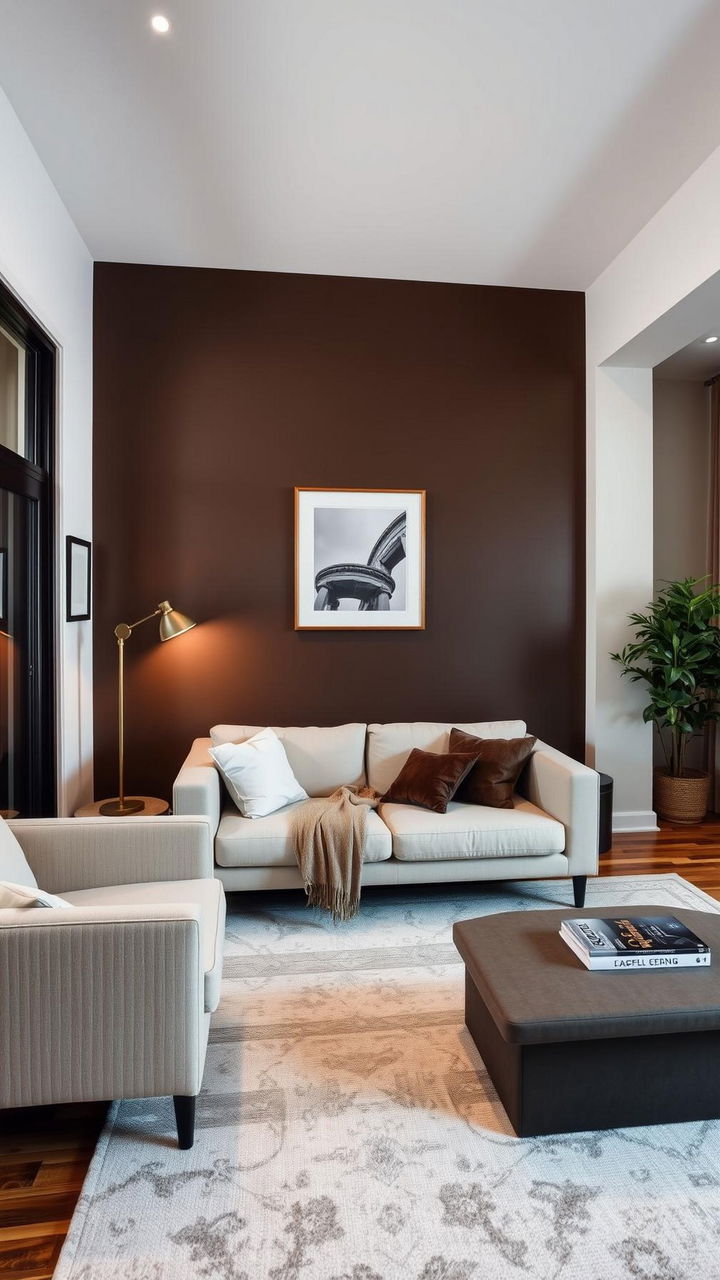
Pick one wall, preferably the one behind the couch or TV, to ground the room with a matte espresso-brown feature. Try at least three samples and look at them in both daylight and lamplight. Espresso looks warmer with 2700K bulbs. For the truest color, prep by de-glossing, filling, sanding, and priming. Cut the edges, then roll them into a tight “W” shape, keeping the edge wet to avoid lap marks. To keep it crisp, stop at the corners. Wrapping a second short return can also make it look like you meant to do it. Use light art, a pale rug, and creamy fabrics to balance out the depth. A limewash or mineral paint in espresso can add movement and hide flaws on textured walls. Use a satin picture light or brass sconces to finish off the look. These will reflect warmth off the wall and keep the mood cozy instead of cave-like.
2. Refinish a Coffee Table in Espresso for an Instant Anchor
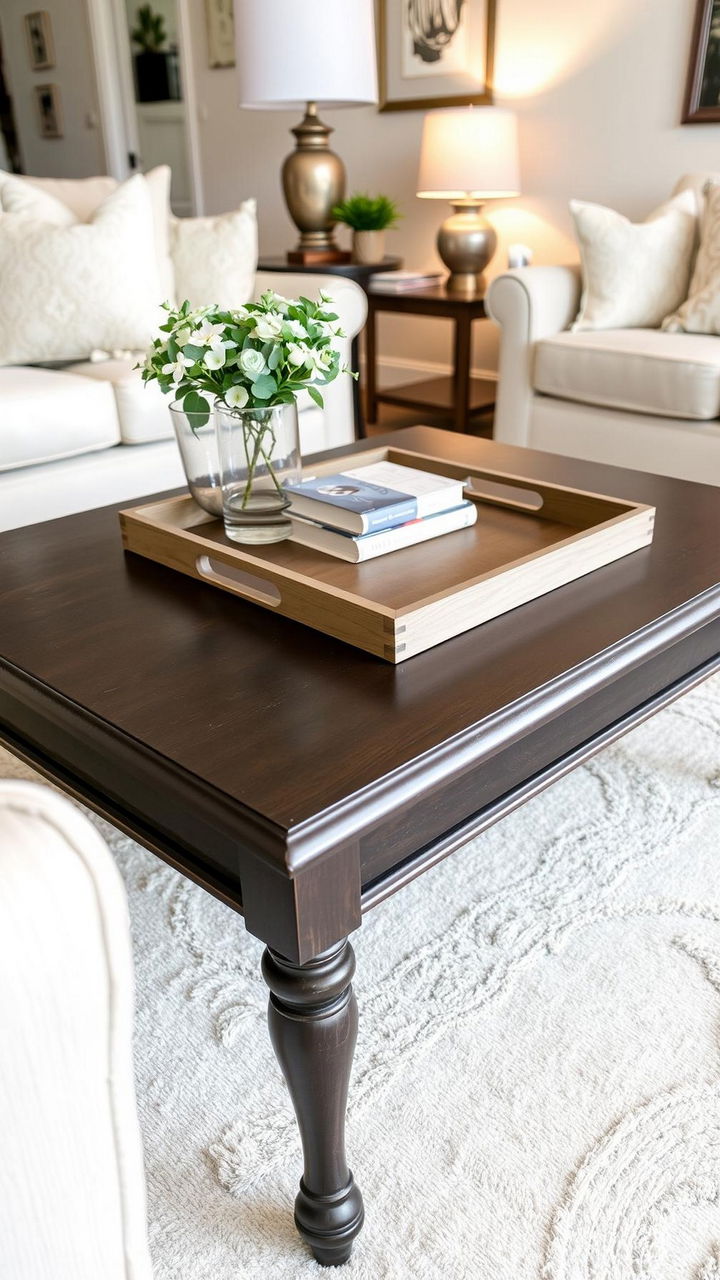
Espresso stain makes a tired coffee table the center of attention. Use a sander with 120, 150, and 180 grit to get rid of the old finish. Then, vacuum up the dust and wipe the surface with a damp microfiber. Brush on a pre-stain conditioner for softwoods that tend to get blotches. Use a lint-free rag to apply gel or oil-based espresso stain in thin, even coats, following the grain. Wipe off any extra right away. After it has completely dried, add a protective topcoat. For easy control, use wipe-on polyurethane; for faster curing, use water-based polycrylic. Satin sheen looks modern and hides wear. To make the corners look more custom, round them off slightly and add felt pads underneath. Use a light tray, stacked books, and a small bud vase to break up the depth. The new espresso color will echo through the room and make lighter fabrics shine.
3. Build Floating Shelves and Stain Them Espresso
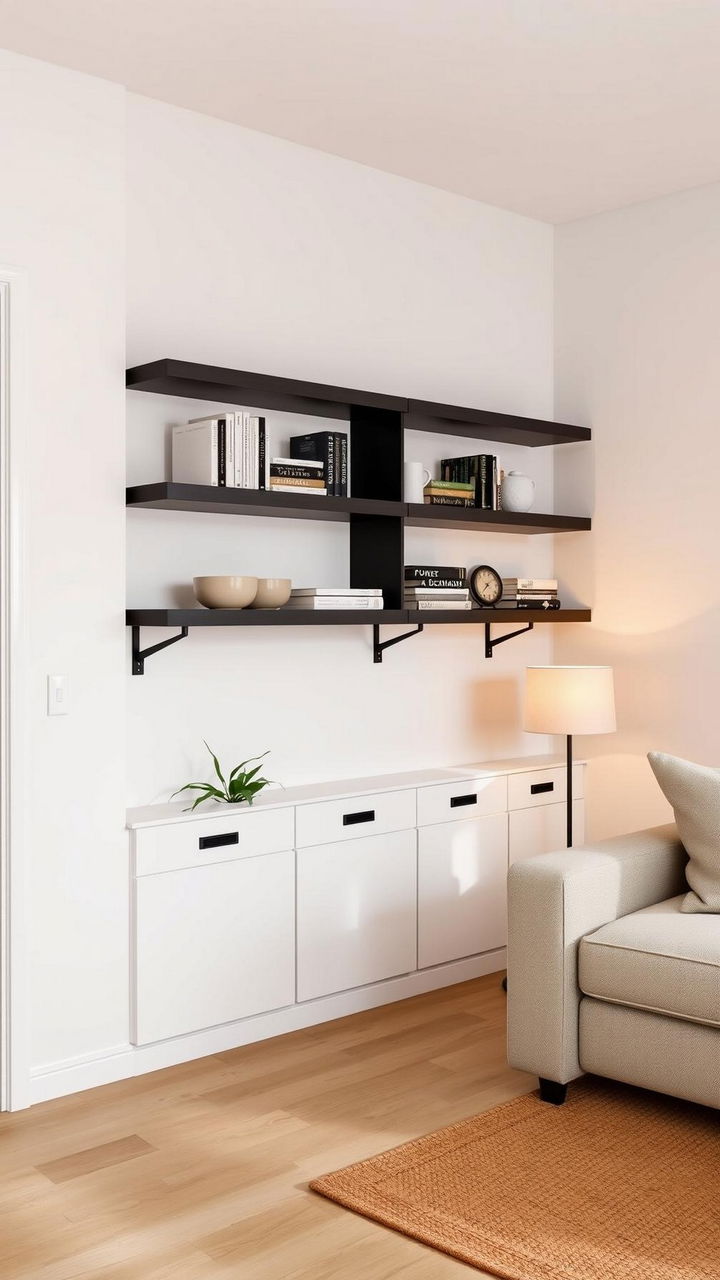
DIY floating shelves give you more storage, make things look more even, and add a nice touch of espresso. Cut 1x boards to the right depth, make a hollow shelf box, and put a hidden cleat into the studs. Before gluing, dry fit and mark the walls that aren’t straight to make sure the seams are tight. Sand the wood in stages, then use a rag to stain the espresso. Finally, seal it with water-based poly to keep the color from rubbing off on other items. Put shelves at eye level with 14 to 16 inches between them. Two or three stacks that are lined up keep it calm. Style in thirds: a few books on their sides, a ceramic or two, and a small plant. For visual stability, put heavier things on the bottom shelf. If you’re renting, use heavy-duty brackets and screw heads with caps that match the color of the brackets. The result is architectural, useful, and a great place to repeat your color scheme.
4. Create an Espresso Frame Gallery Wall with Creamy Mats
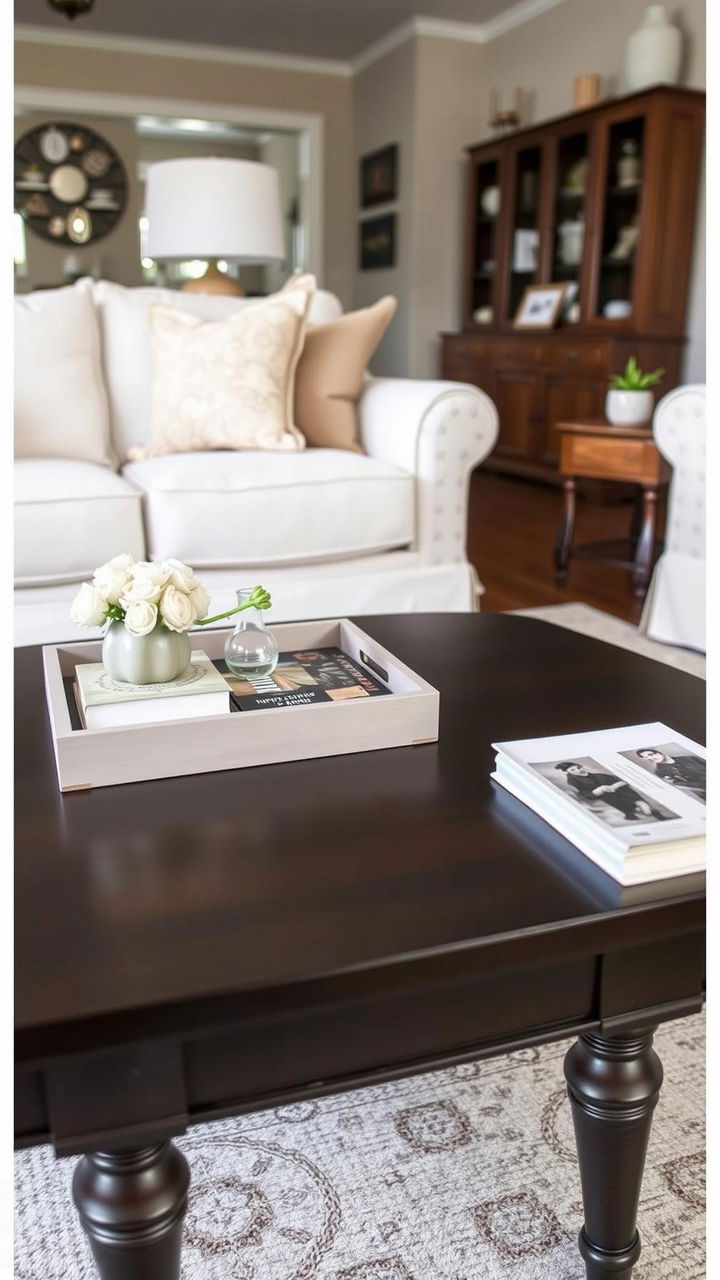
Gallery walls can be busy, but espresso frames with thick off-white mats make everything look more put together. To make mixed woods look like one piece, thrift simple frames, take off the hardware, sand them lightly, and stain or paint them espresso. Cut out Craft paper templates for each frame, tape them to the wall, and adjust the spacing so that the gaps are always 2 to 3 inches wide. Hang with the right level and anchors for drywall or plaster. To keep the colors down, print black-and-white family photos, botanical sketches, or sepia-toned travel photos. To make a horizon line, start with a central row and then work your way out. A light picture above adds a soft wash that makes the dark frames look warmer. Mixing two frame profiles max makes it look planned. The espresso border around the light artwork makes a graphic contrast and picks up on other brown tones in the room.
5. Hang High-and-Wide Drapes on Espresso Rods and Rings
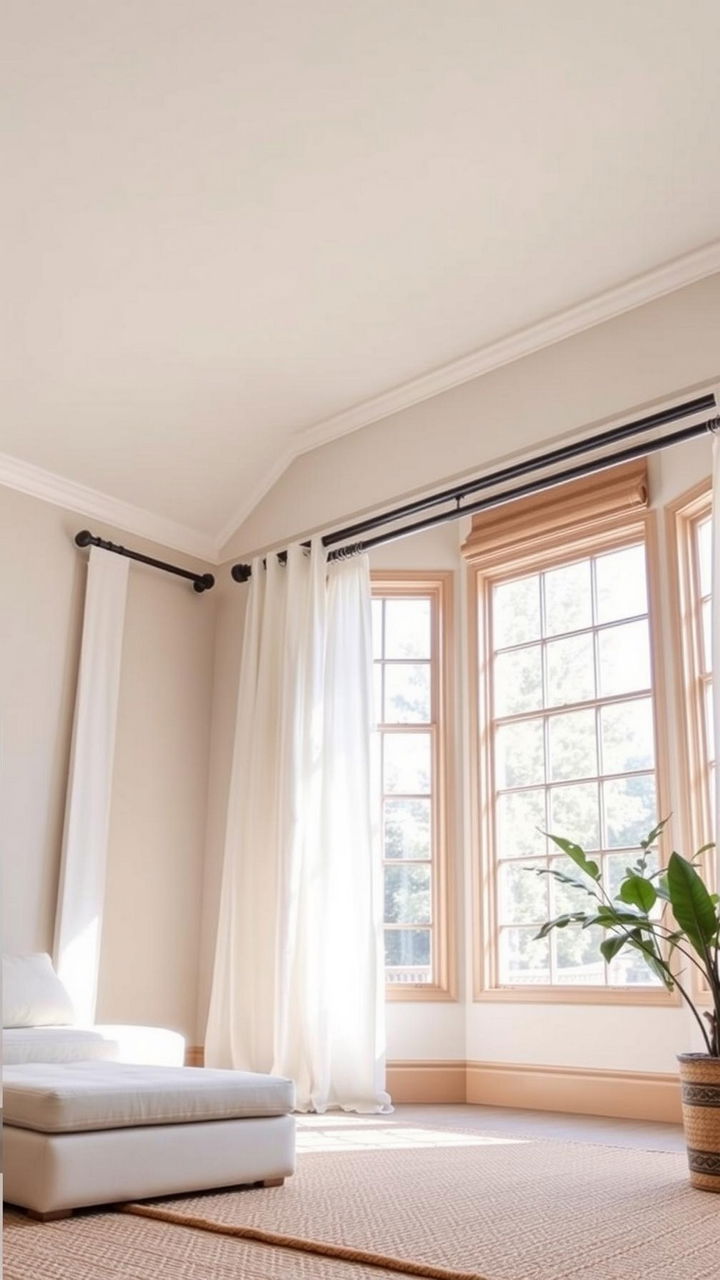
The height of the windows changes the look of a room. Place espresso curtain rods close to the ceiling and make them 8 to 12 inches longer on each side so that the panels don’t touch the glass. Pick warm white linen or linen-blend panels, then use iron-on tape to hem them for a finish that just touches the floor. You can make soft, even pleats with clip rings without sewing. Just space them out evenly for neat folds. If you need to control the light, add a budget blackout lining with fusible web. For rhythm, make sure the rods are the same on all the windows. The espresso hardware goes well with your darker accents, and the light fabric keeps things from feeling too heavy. If your windows are arched or in an odd shape, you can block light leaks by putting up a simple return rod that wraps fabric around the wall. The high-and-wide trick makes the room look bigger right away and highlights that beautiful espresso-brown color scheme.
6. Wrap or Paint a Media Console in Espresso Woodgrain
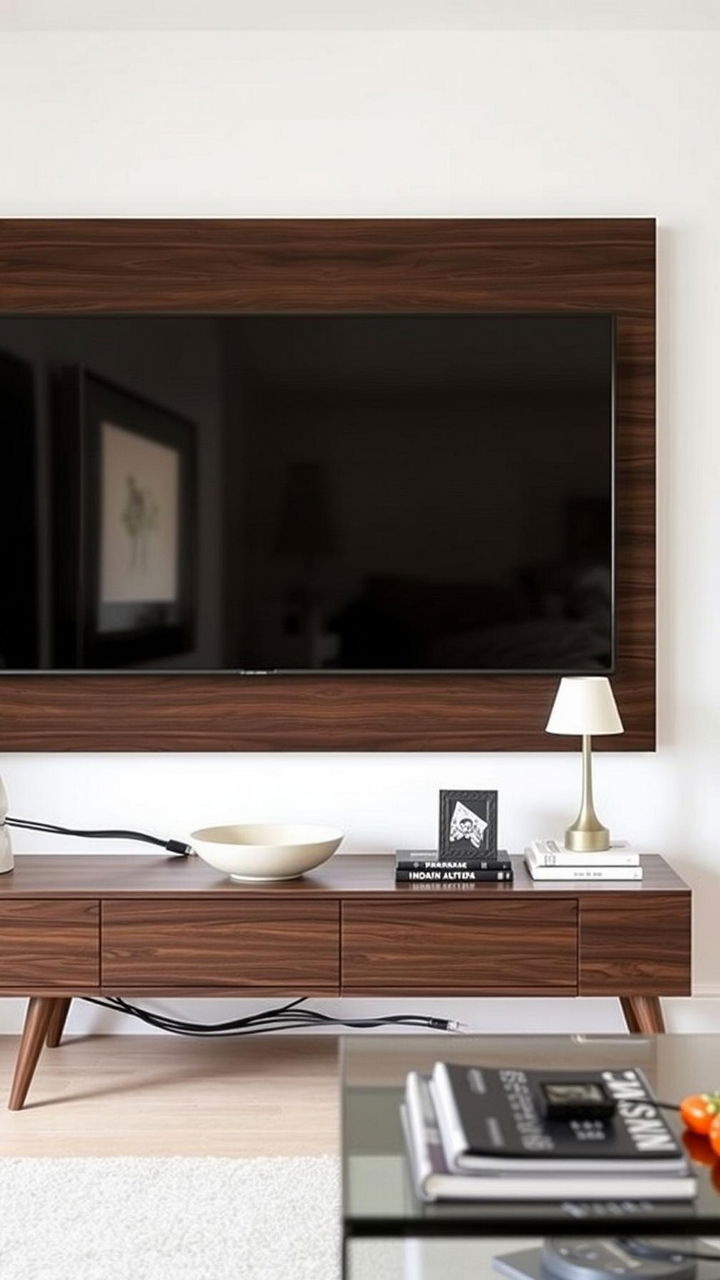
Use an espresso woodgrain vinyl wrap to make a boring media console look better. Take off the doors and hardware, clean everything well, and lightly sand the glossy surfaces. Use a felt squeegee to slowly apply the wrap, using heat to help it go around corners. Seam on the edges instead of the flat faces. For a permanent path, sand, prime laminates that are easy to bond, and spray on a dark espresso enamel. Replace the short feet with tapered wood legs that have been stained to match. Add soft-close hinges for a touch of luxury. Make neat holes for the cables and cover them with grommets. To balance out the dark casework, put a light bowl, some art books, and a small lamp on top of the case. The end result looks custom, hides cords, and holds the wall in place without needing a lot of money or built-ins.
7. Swap to Espresso or Oil-Rubbed Bronze Hardware
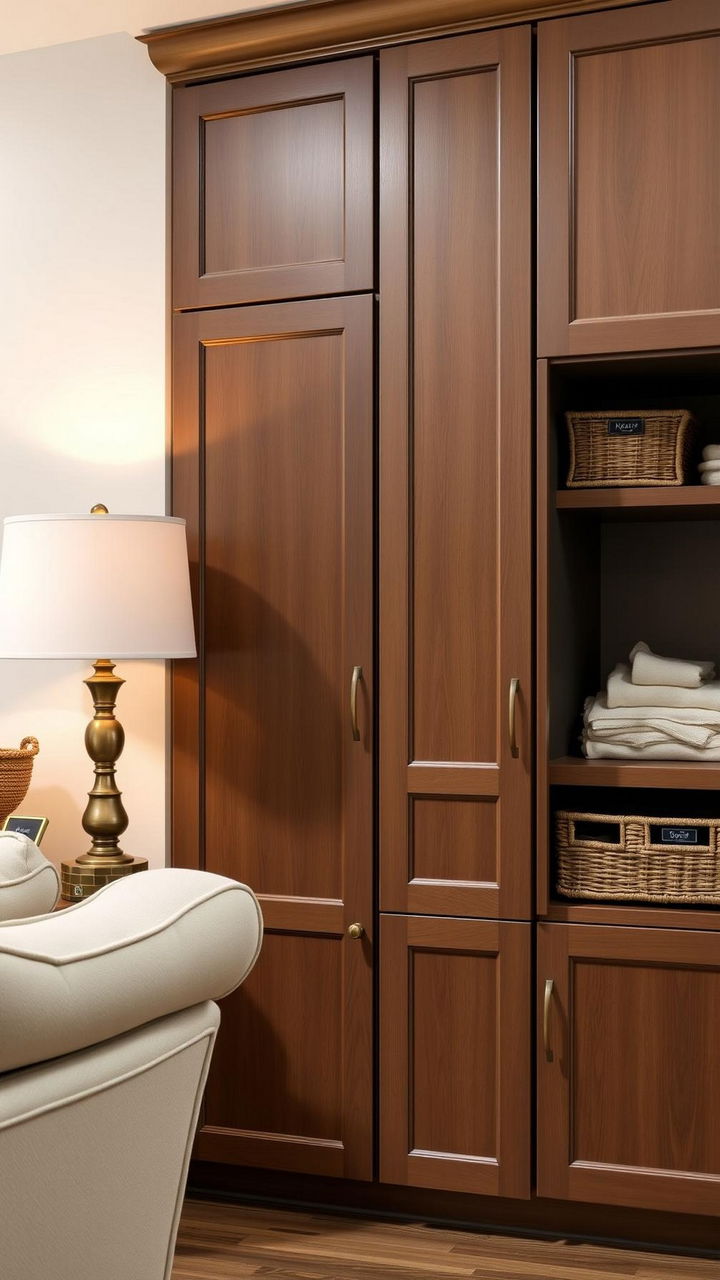
Small changes can have a big effect. Use espresso-brown or oil-rubbed bronze hardware instead of shiny, mismatched pulls on credenzas, built-ins, and doors. Before you order, measure the distances between the centers. If the holes don’t line up, use backplates in the same finish to cover the old ones. A streamlined lever in a deep bronze color instantly makes doors look more modern. For a cohesive look, add door stops and hinge pins that match. Screw on small label frames in the same finish to storage baskets to make them look neater. Mix finishes on purpose. For example, keep the darker hardware on the furniture and add brass to the lamps or frames to make them feel warmer. This controlled layering makes the espresso look like it was made on purpose, not by accident. To make sure that your installations are straight and that the veneer doesn’t splinter when you drill, keep a template, painter’s tape, and a level close by.
8. DIY Leather Accents that Compliment Espresso-Brown

Espresso and cognac leather go well together. Use hem tape and hidden zippers to make no-sew pillow covers out of fake or leftover leather. You can give cabinet pulls a custom grip by wrapping them in leather lace, or you can add a leather handle to a tray of stained espresso. For texture, sew a simple cylindrical plant sling or strap a magazine rack to a wooden backer. Condition leather to make the colors richer and keep the edges shiny. To keep the dark pieces from taking over, add oatmeal throws and a light rug to the warm caramel. Use antique brass or dark bronze for the hardware to connect the leather and the espresso wood. These little, touchable details break up big dark areas and give your living room a crafted, tailored feel without taking over the color scheme.
9. Layer Rugs: Jute Base with a DIY Espresso-Pattern Topper
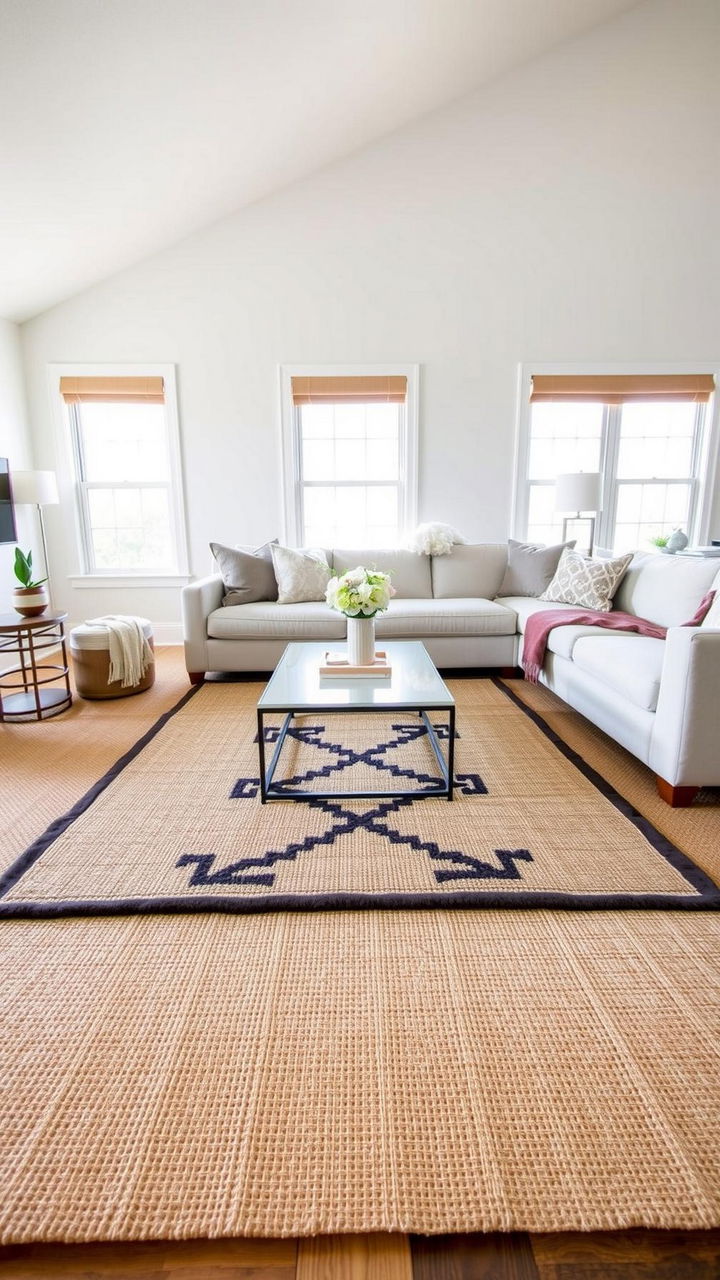
Layering rugs makes espresso lighter and seating more stable. Begin with a neutral jute or sisal base that fits the room, and then add a smaller flatweave that you make yourself. You can make a simple border, grid, or herringbone pattern on a cheap cotton rug by taping it down and painting it with a mix of fabric medium and deep espresso textile paint. Follow the directions for heating each product. Place the patterned topper in the middle of your coffee table so that both edges of the rug are still visible. This gives the floor more depth and contrast without making it darker. Don’t make patterns too loud; a thin espresso pattern on cream looks classy. Put rug pads under each layer to keep it from moving and make steps softer. The layered look gives depth, hides wear in high-traffic areas, and repeats your color scheme in a subtle, graphic way.
10. Paint the Interior Door and Baseboards Espresso

An espresso door can look like a piece of art. Take off the hardware, clean it, sand it, and put on bonding primer. Put two thin coats of durable trim enamel in a dark espresso color, then put it back on with a new bronze or black lever. To keep the story going, use espresso baseboards or a slim base cap painted to match. The dark outline makes pale walls stand out and “seats” the room. Use a good angled brush to keep lines sharp and caulk seams. For smooth finishes, use a low-nap roller. If your room is small, just paint the door and leave the baseboards light so they don’t look too heavy. Put that accent on something else, like a frame, lamp base, or tray, so the door doesn’t feel alone. It’s a quick, big change that feels like it was made just for you, not like it cost a lot.
11. Add Board-and-Batten Wainscoting in Espresso
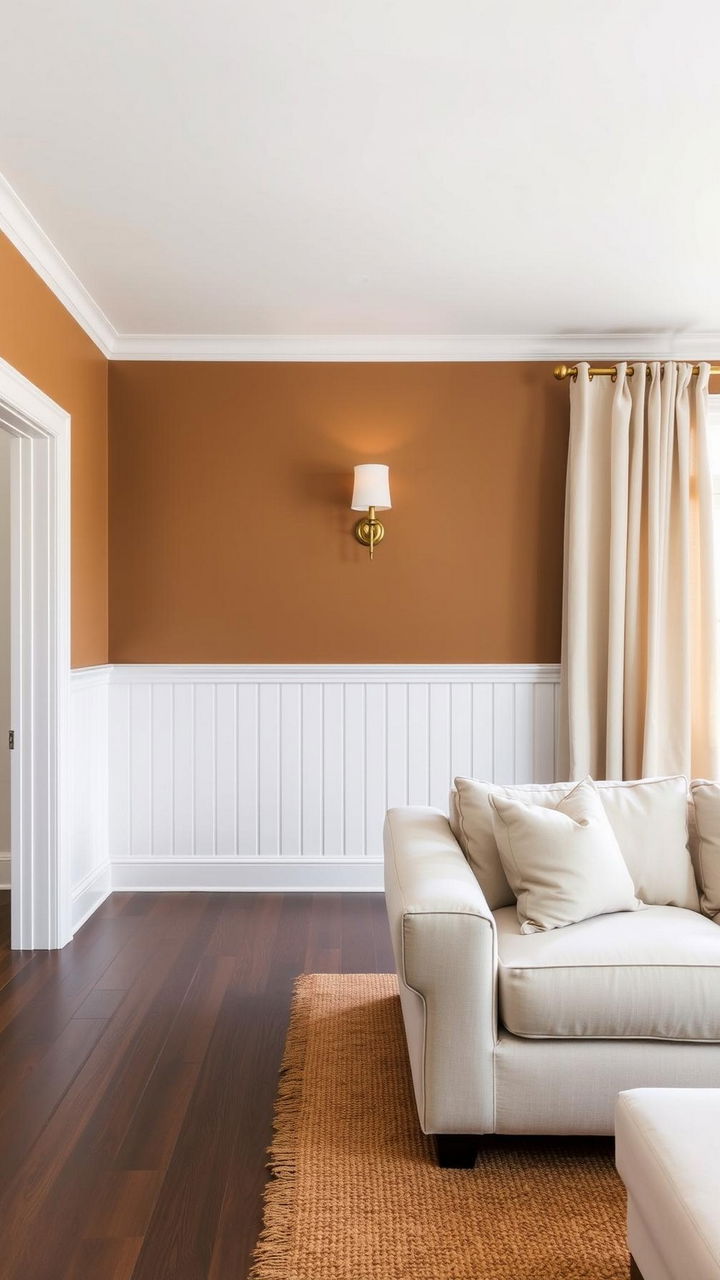
Color and texture in architecture? Sure, please. Put up simple board-and-batten on the bottom third to half of the wall and paint it espresso to add warmth and structure. Use 1x4s as battens, spaced evenly based on the width of the wall. Add a top rail and a small cap to finish the edge. To get sharp shadow lines, caulk, fill, and sand. To keep the room bright, paint the walls a warm white or pale gray. This treatment keeps walls from getting scuffed, makes the room feel more upscale, and lets you enjoy espresso without having to go all the way to the top. Light linen drapes and brass or fabric-shaded sconces mounted above the rail will finish off the look and push light down the wall’s texture. The depth gives the impression of being tailored, timeless, and warm.
12. Craft a Warm Lighting Plan Around Espresso Tones
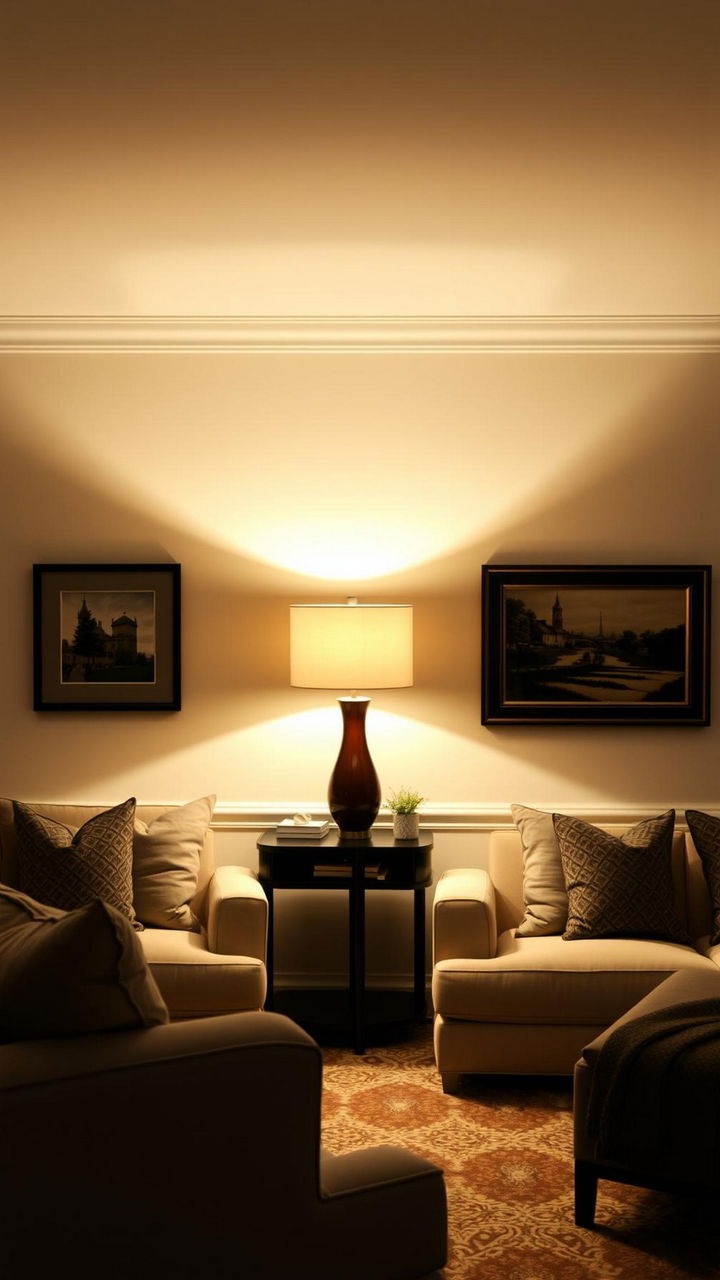
Under warm light, espresso shines. Change the bulbs to 2700–3000K and add more light sources, like a floor lamp, two table lamps, and an accent sconce or picture light. Use linen to cover a worn-out drum shade to diffuse the light, or make a pleated shade for texture. Choose lamp bases made of espresso wood, bronze, or ceramic. Put in a plug-in dimmer for instant control. Dark finishes look best in soft, pooled light. Point light at walls and bookshelves to reflect warmth, and put a small LED puck under a shelf for art. Frosted glass shades will keep things from being too harsh. This layered plan makes deep browns soft and velvety, perfect for relaxing at night, while still showing off texture and grain during the day.
13. Refresh a Fireplace Mantel with Espresso Stain

If your mantel is made of wood, take off the old varnish, sand it down, and stain it espresso to make it stand out. Use a clear coat that can handle heat to protect the area around the firebox. Paint the firebox a flat black color that can handle high heat for a crisp background. To make the surround look lighter, add peel-and-stick marble-look panels or slim ceramic-look decals in cream. Use a brass mirror, some stacked books, and one stone or ceramic sculpture to add style. Keep the decorations on the mantel uneven so they don’t look too heavy. Espresso needs space to breathe. If you don’t have a mantel, you can make a simple shelf out of 2x stock, add a cove trim edge, stain it espresso, and mount it into studs. The deeper tone frames the flame glow beautifully and holds the seating arrangement in place.
14. Make Coffee-Wash Art and an Espresso Ledge to Display It
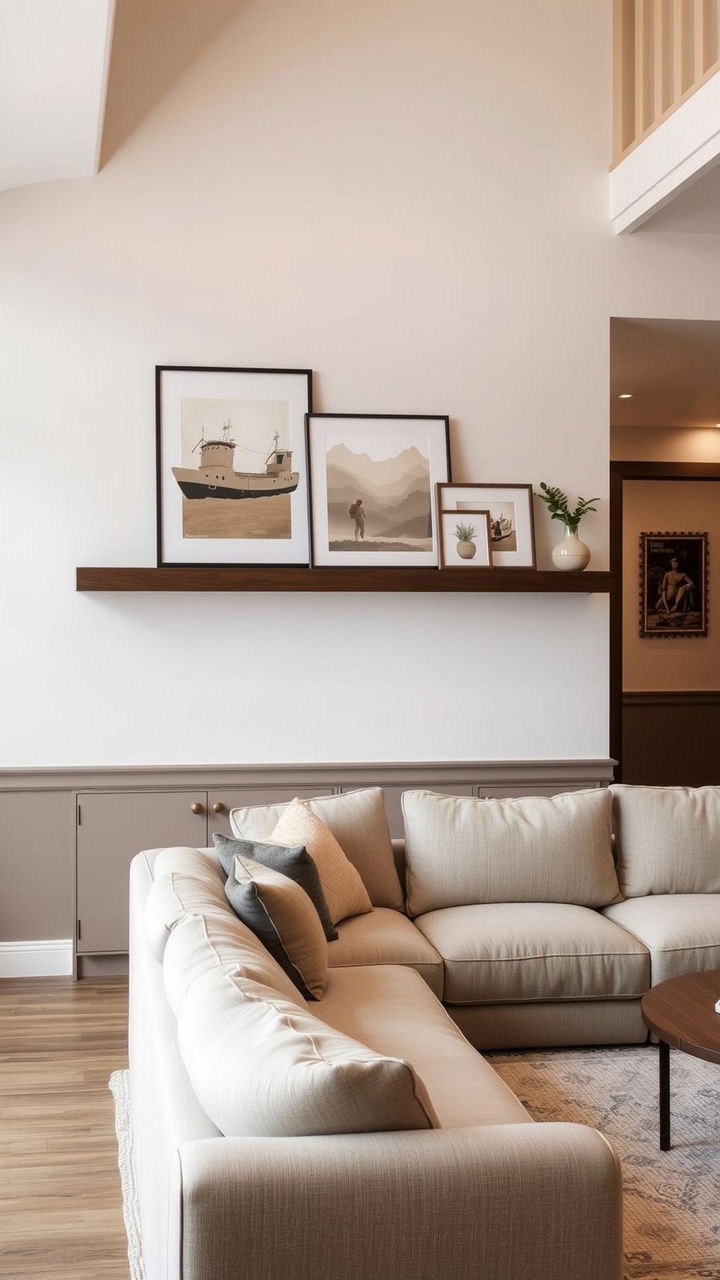
Use brewed coffee and waterproof ink to make dark, black-and-white art that matches your color scheme. Use tape to stretch watercolor paper, then brush on broad coffee washes. Finally, add ink lines or splatters for contrast. Use clear spray to seal. Make a picture ledge by cutting a 1×4 with a 1×2 front lip and staining it espresso. Then, mount it level into the studs. To keep it interesting, use frames of different sizes, like thin black, espresso, and oak. Change the art every season without making new holes. The tactile, DIY pieces feel one-of-a-kind and surprisingly classy, especially when placed against light walls or a feature wall. At night, add a small clip-on light to the art to make the browns stand out more.
15. Greenery and Espresso-Stained Planter Sleeves
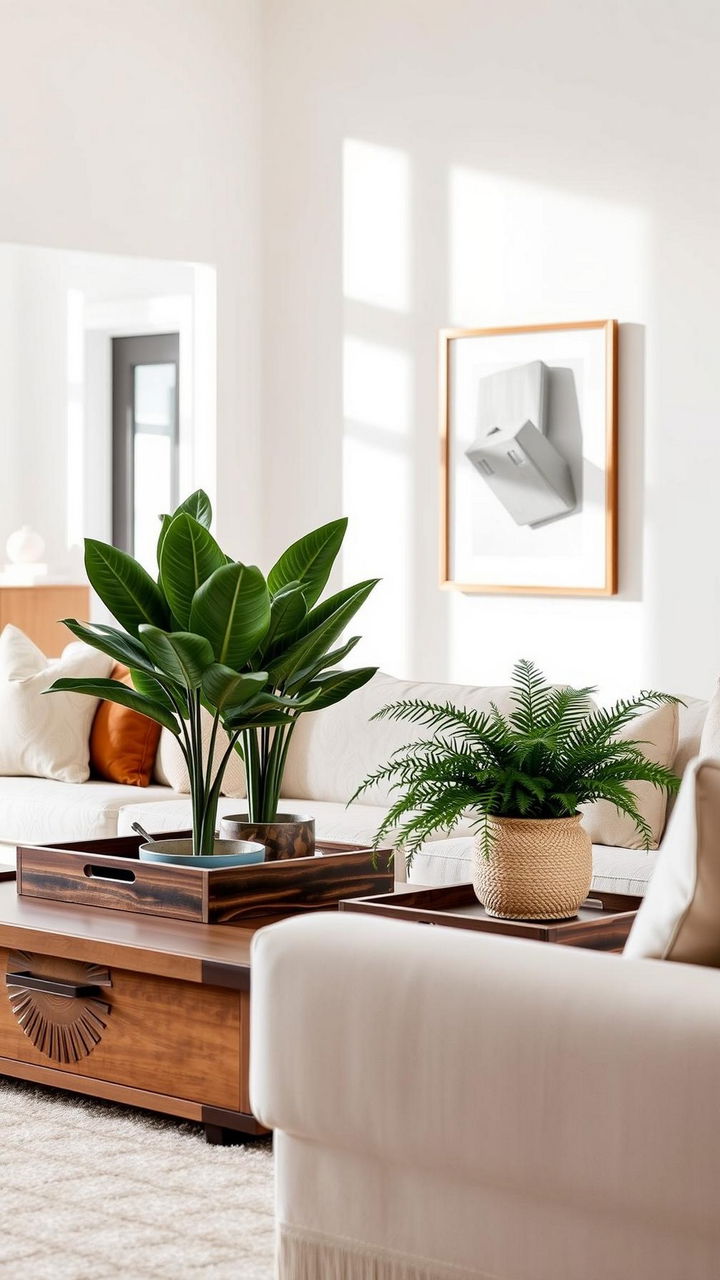
Plants wake up deep colors. Put nursery pots in DIY wood sleeves: make simple boxes out of plywood scraps, sand them smooth, and stain them espresso to match shelves or frames. Put plastic on the inside to protect the wood. Group three sizes together: a tall floor, a mid-tabletop, and a tiny shelf. Change the shapes of the leaves to add texture. Fern, ZZ, and rubber plant all like indirect light and look good with warm colors. Put a couple of woven baskets in natural seagrass to keep the air moving. The living green cuts through the espresso’s saturation, adds movement, and softens sharp edges. Put water on a tray, turn it every now and then, and keep the leaves clean so they shine against the dark background.
Conclusion
When you balance richness with light, texture, and glow, espresso-brown looks its best. Like a tailored suit, it should have strong lines, good materials, and well-thought-out accessories. Pair deep colors with linen, brass, and plants if you paint a wall, refinish a table, or add architectural trim. The end result feels solid, warm, and timelessly beautiful.

